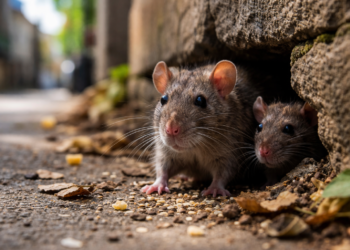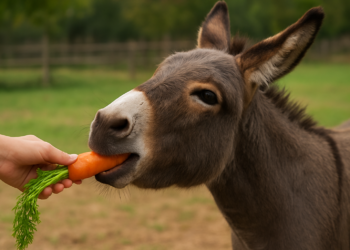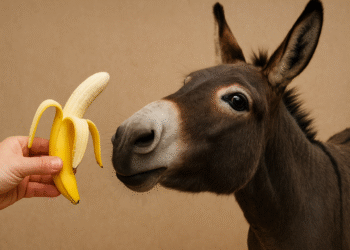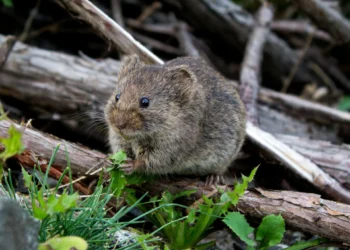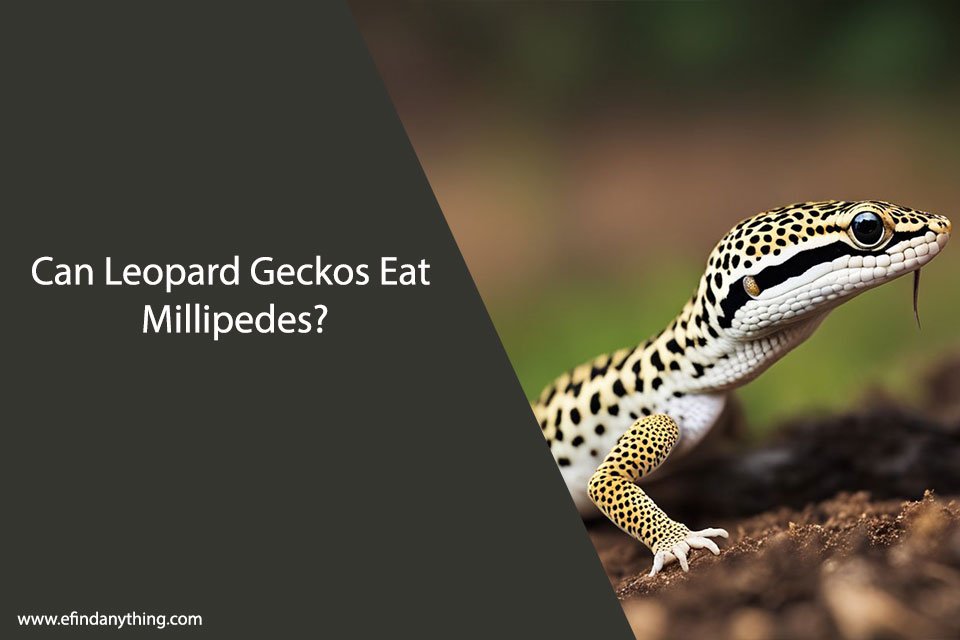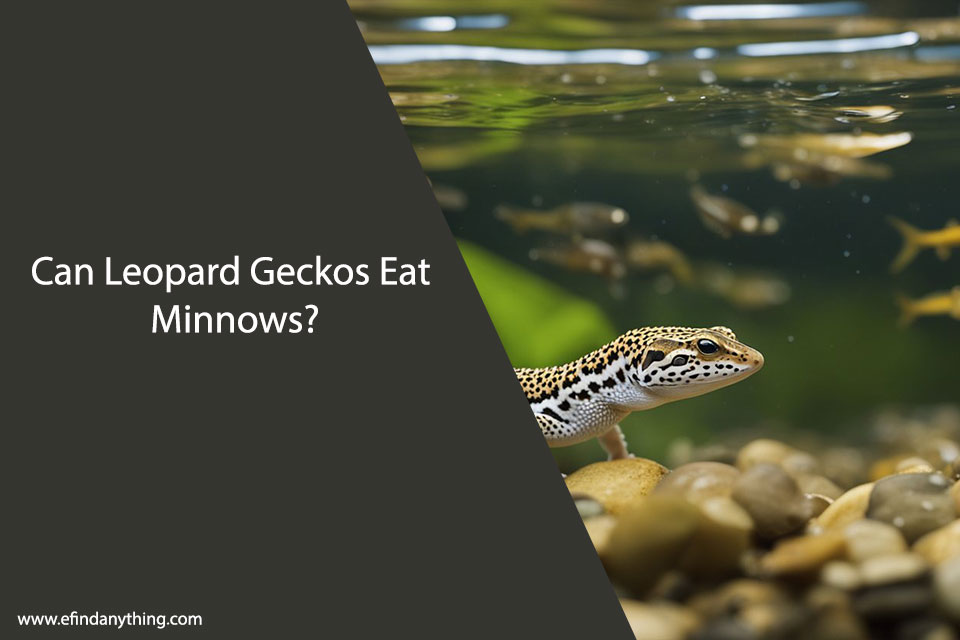Leopard geckos are popular pets among reptile enthusiasts due to their docile nature, low maintenance requirements, and unique appearance. As with any pet, proper nutrition is essential for their health and wellbeing. One common question that arises among leopard gecko owners is whether or not they can eat mice.

Leopard geckos are carnivores and require a diet that is high in protein. In the wild, they primarily feed on insects such as crickets, mealworms, and waxworms. However, some owners may wonder if mice can be added to their diet to provide additional protein. While mice are a common food source for other reptiles such as snakes, the answer for leopard geckos is not as straightforward.
Can Leopard Geckos Eat Mice
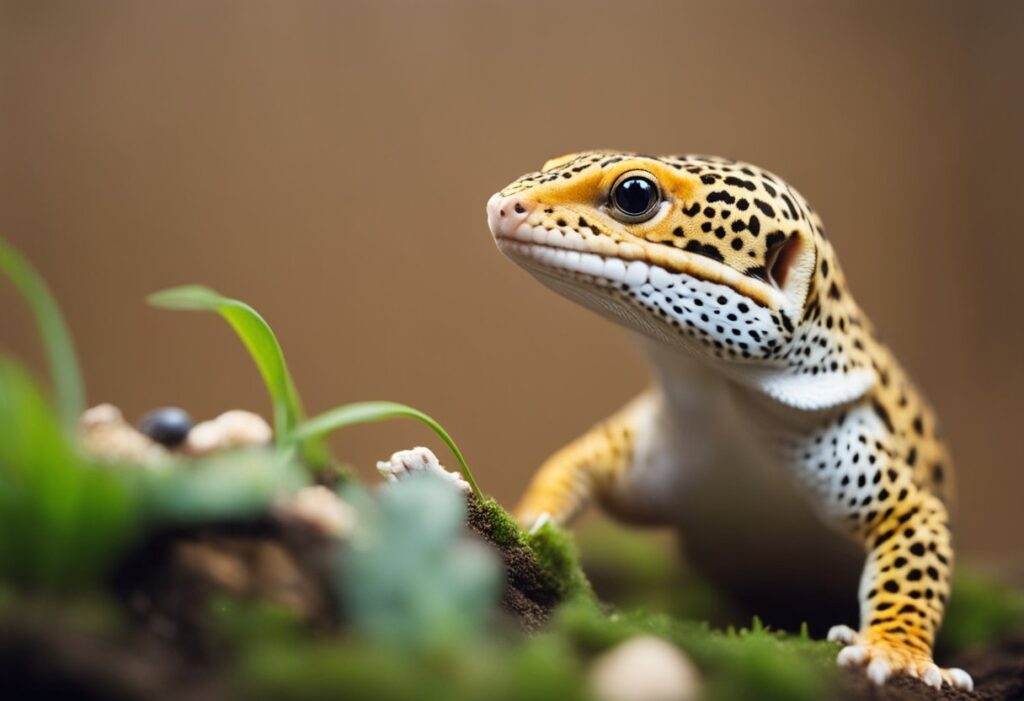
Leopard geckos are carnivorous reptiles that are known to eat a variety of insects, including crickets, mealworms, and waxworms. However, some leopard gecko owners may wonder if they can feed their pets mice as well.
While leopard geckos are capable of eating mice, it is not recommended as a regular part of their diet. Mice are high in fat and lack the necessary nutrients that leopard geckos require. Feeding mice to leopard geckos can also lead to health problems such as obesity and liver disease.
It is important to note that leopard geckos are not natural predators of mice in the wild. They primarily eat insects and other small invertebrates. While they may occasionally consume small vertebrates, such as lizards and rodents, it is not a significant part of their diet.
In summary, while leopard geckos can eat mice, it is not recommended as a regular part of their diet. A balanced diet consisting of insects and other small invertebrates is essential for their health and well-being.
Leopard Gecko Dietary Basics
Nutritional Requirements
Leopard geckos are insectivores, which means they primarily eat insects. They require a diet that is high in protein and low in fat. In addition to protein, they also require vitamins and minerals to maintain good health. Calcium is especially important for leopard geckos, as they need it to maintain strong bones and prevent metabolic bone disease.
Feeding Frequency
Leopard geckos should be fed every other day. Adult geckos can be fed every two to three days. It’s important not to overfeed leopard geckos, as obesity can lead to health problems.
Natural Diet Composition
In the wild, leopard geckos eat a variety of insects, including crickets, mealworms, and waxworms. They may also eat other small animals, such as spiders and scorpions. It’s important to provide a varied diet for pet leopard geckos to ensure they get all the nutrients they need.
Here is an example of a feeding schedule for a leopard gecko:
| Day | Morning | Evening |
|---|---|---|
| Monday | 3-5 crickets | 3-5 mealworms |
| Tuesday | 3-5 crickets | 3-5 mealworms |
| Wednesday | 3-5 crickets | 3-5 mealworms |
| Thursday | 3-5 crickets | 3-5 mealworms |
| Friday | 3-5 crickets | 3-5 mealworms |
| Saturday | 3-5 crickets | 3-5 mealworms |
| Sunday | No food | No food |
It’s important to provide fresh water for leopard geckos at all times. The water should be changed daily to ensure it’s clean and free of bacteria.
Suitability of Mice as Food
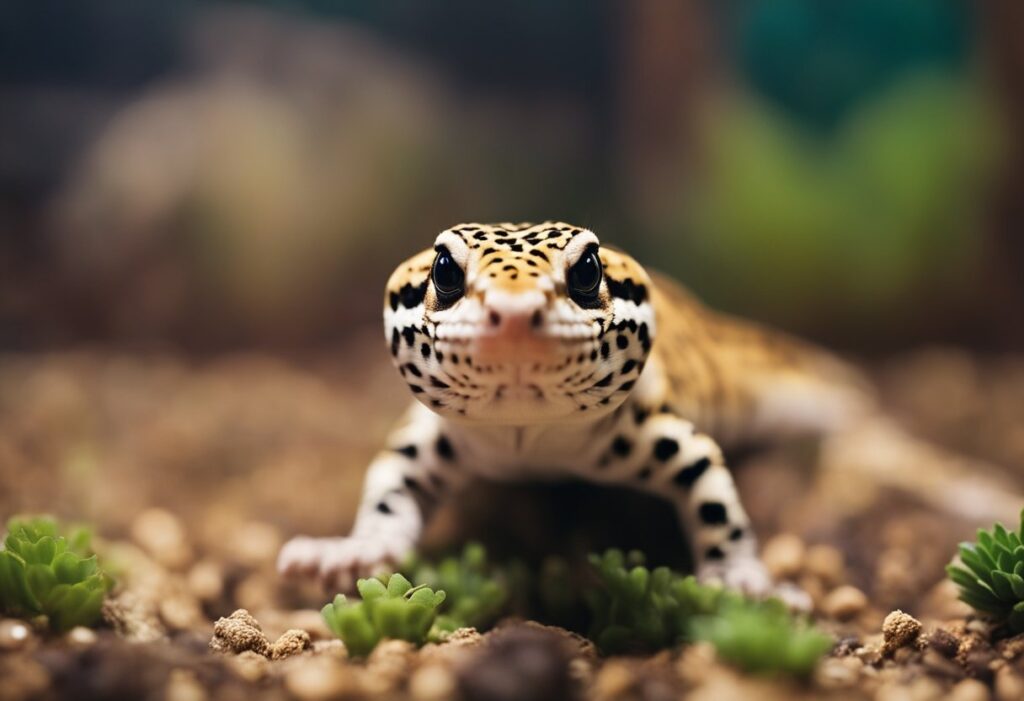
Leopard geckos are known to be insectivores, but they can also eat small vertebrates such as mice. However, it is important to consider the suitability of mice as food for leopard geckos.
Size and Age Considerations
Mice can be a suitable food source for adult leopard geckos, but they may not be appropriate for younger or smaller geckos. The size of the mouse should be proportional to the size of the gecko. A mouse that is too large can cause choking or other digestive problems. It is recommended to feed baby or juvenile leopard geckos with insects such as crickets or mealworms.
Potential Health Risks
Mice can carry parasites and diseases that can be harmful to leopard geckos. It is important to ensure that the mice are healthy and free from any diseases before feeding them to your gecko. Feeding your gecko with wild-caught mice is not recommended as they may carry diseases or parasites.
Furthermore, feeding leopard geckos with mice that are too frequent or too large can lead to obesity, which is a common health problem in captive leopard geckos. It is important to feed them a balanced diet with a variety of food sources.
In summary, mice can be a suitable food source for adult leopard geckos, but it is important to consider the size and age of your gecko, as well as the potential health risks associated with feeding them mice. It is always best to consult with a veterinarian or a reptile expert before introducing a new food source to your leopard gecko’s diet.
Feeding Techniques
Live Prey vs Pre-Killed
When it comes to feeding leopard geckos, there is a debate about whether to feed them live prey or pre-killed prey. Both options have their advantages and disadvantages.
Live prey can provide a more natural hunting experience for the leopard gecko, which can help stimulate their natural instincts. However, live prey can also pose a risk to the gecko, as they can fight back and injure the gecko. Additionally, live prey can be more difficult to obtain and store than pre-killed prey.
On the other hand, pre-killed prey is easier to obtain and store, and it eliminates the risk of injury to the gecko. However, some leopard geckos may not recognize pre-killed prey as food, and they may not be as interested in eating it.
Ultimately, the decision of whether to feed live or pre-killed prey to your leopard gecko is up to personal preference and what works best for your gecko.
Safe Handling Practices
When feeding leopard geckos, it is important to practice safe handling techniques to prevent injury to both the gecko and the feeder.
Firstly, it is important to wash your hands before and after handling the gecko or its food to prevent the spread of bacteria. Additionally, it is recommended to use feeding tongs or tweezers to handle the prey, rather than using your hands, to prevent accidental bites or scratches.
It is also important to make sure that the prey is an appropriate size for the gecko. Prey that is too large can cause choking or digestive issues, while prey that is too small may not provide enough nutrition.
By following these safe handling practices, you can ensure a safe and healthy feeding experience for both you and your leopard gecko.
Alternatives to Mice
Leopard geckos are primarily insectivores, but they may also eat small mammals like mice. However, feeding mice to leopard geckos is not recommended as mice are high in fat and can cause health problems for the gecko. Fortunately, there are many alternatives to mice that can provide the necessary nutrients for leopard geckos.
Insects and Worms
Insects and worms are the primary food source for leopard geckos in the wild, and they are a great alternative to mice. Some of the best insects for leopard geckos include crickets, mealworms, superworms, and dubia roaches. These insects are high in protein and low in fat, making them an ideal food source for leopard geckos. Leopard geckos may also eat silk worms, horn worms, and wax worms as treats.
Commercial Diets
There are also many commercial diets available that are specially formulated for leopard geckos. These diets usually come in the form of pellets or powders that can be mixed with water to create a paste. Some of the best commercial diets for leopard geckos include Repashy’s Crested Gecko Diet, Pangea Fruit Mix Complete Gecko Diet, and Zoo Med’s Leopard Gecko Food. These diets are nutritionally balanced and provide all the necessary vitamins and minerals for leopard geckos.
Supplements and Vitamins
In addition to a balanced diet, leopard geckos also require supplements and vitamins to maintain their health. Calcium is particularly important for leopard geckos as it helps to maintain healthy bones and prevent metabolic bone disease. Leopard geckos also require vitamin D3 to properly absorb calcium. These supplements can be added to the gecko’s food or dusted onto insects before feeding. It is important to follow the manufacturer’s instructions when using supplements and vitamins to avoid overdosing.
Overall, there are many alternatives to mice that can provide the necessary nutrients for leopard geckos. Insects and worms, commercial diets, and supplements and vitamins are all great options for feeding leopard geckos. By providing a balanced and varied diet, leopard gecko owners can ensure their pets live long and healthy lives.
Monitoring Your Leopard Gecko’s Health
Weight Tracking
Monitoring your leopard gecko’s weight is crucial to ensure that they are maintaining a healthy weight. A healthy adult leopard gecko typically weighs between 45-65 grams, while a healthy juvenile weighs around 15-25 grams. It is recommended to weigh your gecko once a week at the same time of day to get an accurate reading.
If your leopard gecko is losing weight rapidly, it could be a sign of an underlying health issue. On the other hand, if your gecko is gaining weight too quickly, it could be a sign of overfeeding or an underlying health issue. In either case, it is recommended to consult with a veterinarian who specializes in reptile care.
Behavioral Signs of Nutritional Issues
Leopard geckos can show behavioral signs of nutritional issues if they are not receiving a balanced diet. Some common signs include lethargy, lack of appetite, constipation, and abnormal feces. If you notice any of these signs, it is important to evaluate your gecko’s diet and make any necessary changes.
It is recommended to feed your leopard gecko a diet that consists of live insects such as crickets, mealworms, and dubia roaches. While leopard geckos are known to eat mice in the wild, it is not recommended to feed them mice in captivity as it can lead to nutritional imbalances and health issues.
By monitoring your leopard gecko’s weight and paying attention to any behavioral signs of nutritional issues, you can ensure that your gecko is maintaining a healthy diet and overall health.
Frequently Asked Questions
Is it safe for leopard geckos to consume pinky mice?
Yes, it is safe for leopard geckos to consume pinky mice. In fact, pinky mice are a common food source for leopard geckos in captivity. However, it is important to ensure that the pinky mice are appropriately sized for the gecko and that they are fed in moderation.
What are the dietary implications of feeding pinky mice to leopard geckos?
Feeding pinky mice to leopard geckos can provide them with a source of protein and fat that is similar to their natural diet in the wild. However, it is important to note that pinky mice should not be the sole source of nutrition for leopard geckos. It is recommended to provide a varied diet that includes insects and other appropriate food items.
How often can a leopard gecko be fed pinky mice?
Leopard geckos can be fed pinky mice once a week or as part of a varied diet. It is important to monitor the gecko’s weight and adjust feeding frequency accordingly.
What size of mice is appropriate for leopard geckos to eat?
Leopard geckos can consume pinky mice, which are newborn mice that weigh approximately 1-2 grams. As the gecko grows, larger mice can be offered, but it is important to ensure that the size of the mouse is appropriate for the size of the gecko.
Are there any risks associated with leopard geckos eating live prey like mice?
There is a risk of injury to the gecko if the mouse fights back or if it is too large for the gecko to handle. It is important to supervise feedings and remove any uneaten prey to prevent injury or stress to the gecko.
Can feeding mice to leopard geckos affect their health or behavior?
Feeding mice to leopard geckos in moderation is unlikely to have a negative impact on their health or behavior. However, it is important to ensure that the gecko is receiving a balanced diet and that the mice are appropriately sized. Overfeeding or feeding an unbalanced diet can lead to health issues.


